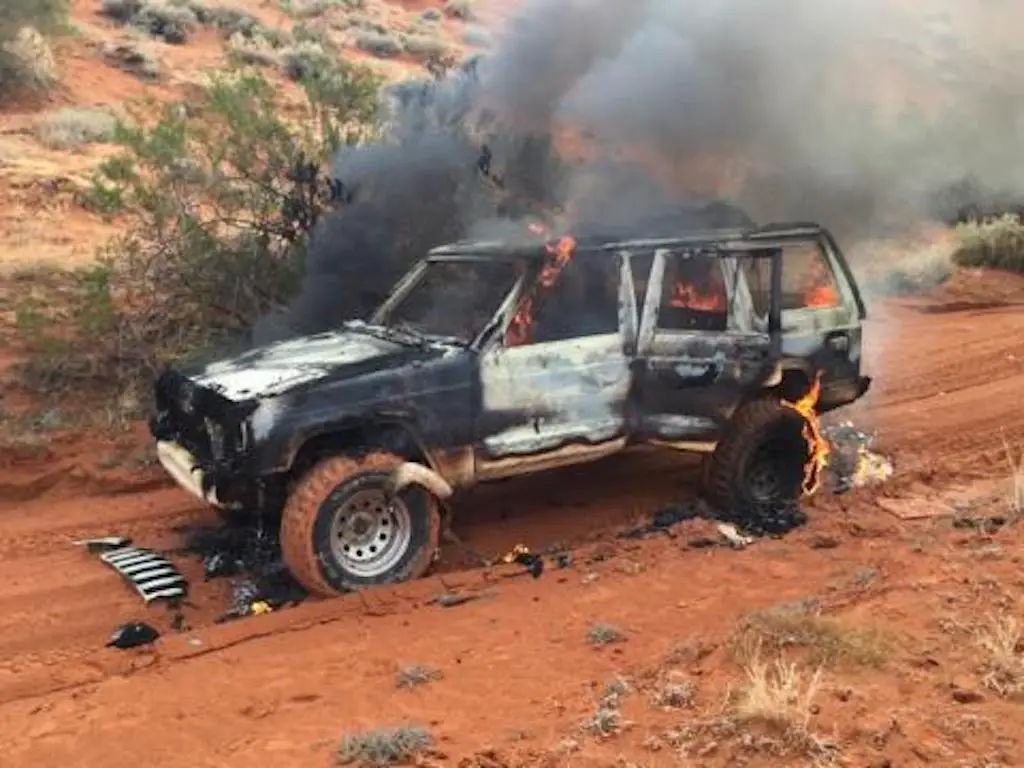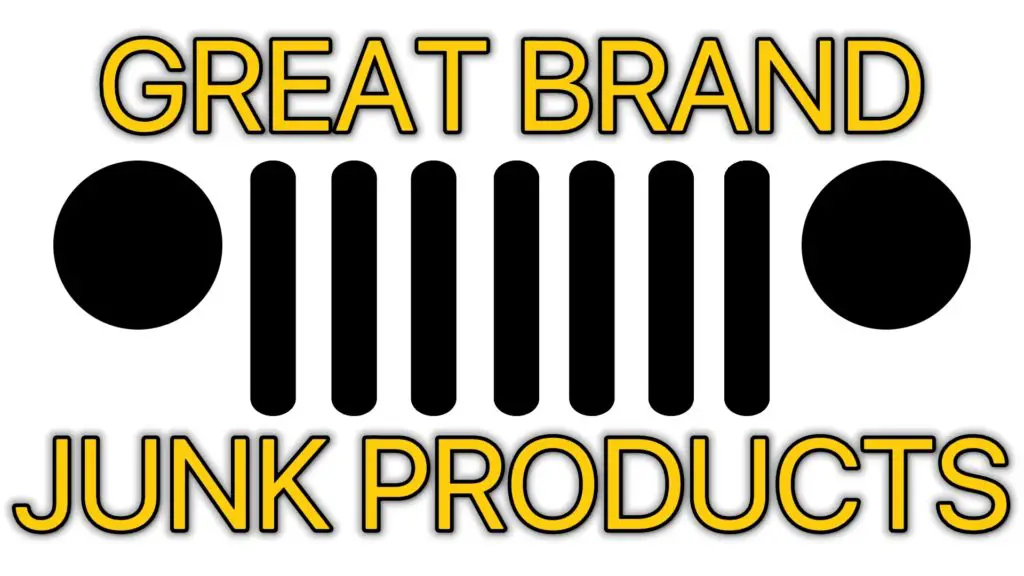The Jeep brand is probably THE MOST iconic American automotive brand, as the original model inspired many copycats throughout the world. The Toyota Land Cruiser, the Land Rover, the Ford Bronco: none would exist if it weren’t for the Original Jeep.
And despite going through multiple owners as the result of continued mergers of its parent company since WWII, it has remained highly profitable, and is always the most desirable brand for any company buying them out. Whether through Kaiser’s merger with Willys-Overland, or in the merger of Fiat-Chrysler and Peugeot that resulted in its current owner, Stellantis, all the outside companies wanted the same thing: the Jeep brand. Why is that?
(If you want to see an analysis on a brand that is the OPPOSITE of Jeep, check out this video or article)
Table of Contents
It was the first game in town
The Jeep was the first four-wheel drive that many people were exposed to, and this gives it the benefit of being “The Original.” In fact, in some less knowledgable circles, there are many people that think of a “Jeep” as any off-road vehicle, and the entire brand has become synonymous with go-anywhere vehicles that can conquer whatever terrain you can throw at them.
And because many of the best off-roaders in the world: the original Land Rover defender, the Land Cruiser 70 series, the Mitsubishi Pajero, Y70 Nissan Patrol, and the Suzuki Jimny; were either only sporadically sold in the United States, (like the Pajero, Jimny, and Defender), or were never sold stateside in the first place (Patrol and 70 Series).
In contrast, some form of Jeep bearing the appearance of the original silhouette that Americans have come to know has been sold to the public continuously since the 1940s. It has largely maintained a dominant place on the 4X4 market in America as a result of this.
The unifying Aspect
Among those same consumers, owning a Jeep has become an entrenched part of American identity that, interestingly, holds near-universal appeal among white Americans, which is rare in this day and age.
Why is this?
It is because the Jeep brand brings up three things in the minds of its current buyers. The first: World War II and America’s success in that war. The Second: the versatile outdoorsy image. The Third: Sex Appeal. The Fourth: Jeep Culture
World War II
The association of the Jeep brand with World War II and America’s victory in that war gives the brand a positive image in the eyes of both conservative and liberal white Americans, and older white Americans. For this older demographic, many of their fathers were the soldiers in that war. And having a boomer father myself, I can attest that hero worshipping what they call “The Greatest Generation” of their parents is a fairly common trait.
For more conservative white Americans, World War II harkens back to a time when America was culturally more unified and “fought for what was right.” (i.e. when America was great). Liberal white Americans would largely agree with the second sentiment, as Nazism, in contemporary American culture, is the baseline for ultimate evil, and WWII saw its defeat.
So for all these groups in older generations, the association of the Jeep with World War II gives the brand strength in the marketplace.
Versatile Outdoorsy Image
However, among younger white people, for whom WWII is exclusively an event they read about in history books, Jeep retains appeal because of its outdoorsy image and sex appeal.
In rural America, the outdoorsy image and off-road ability is a huge positive, as mud bogging and rock crawling are very popular forms of motorsport in rural communities. Furthermore, their traditionally small size and off-road utility is a perfect fit for people that hunt deer, moose, or other large game, and that is a VERY POPULAR thing in that part of the country.
Sex Appeal
In American suburbs, both the middle class and the wealthier ones, Jeeps have appeal because the outdoorsy image is intrinsically tied to a social life that these people desire. This is because when many people think of a Jeep, they think of attractive young people taking the doors off, throwing a cooler with drinks in the back, and going to the beach with all their friends to sunbathe, play volleyball, swim, and just have a good time.
All these images are desirable to people, because people want to be young and attractive. They want to be cool. And most importantly, they want to be LIKED.
And for women, this is doubly so, because you know which fictional character is commonly depicted in a pink Jeep? Barbie. An icon for generations of young white American women that defined their perception of what was pretty. And in a society where insecurity about one’s body image and loneliness are unfortunately commonplace? Just buy a Jeep, and all that goes away.
Jeep Culture
However, the cherry on top of this branding is the subculture that is associated with the brand and Jeep owners. They have their own imagery and greeting, the Jeep wave.
Not only that, the Jeep ownership has its own other unique behaviors, like parking together next to other Jeep owners, taking pride when their Jeep is 100% covered in mud, jumping curbs when parking, and putting one front wheel on top of another Jeeps’s exposed front wheel, while leaving the other on the ground to show off their suspension articulation.
Oh, and don’t forget about the obligatory loud music, and the need to police other people’s poor job of parking their cars by making it impossible to get inside their vehicles jobs. And if you question any of this? They will say “Oh, its a Jeep thing, you wouldn’t understand.”
Problem?
A strong brand that invokes near-religious levels of devotion to it essentially is a money-printing machine. Too bad the products being sold as Jeeps are total pieces of crap.
In my view, there are almost no redeeming features to a Jeep.

For starters, Jeeps are generally unreliable, and have been for decades. On older wranglers, while the AMC 4.2 straight 6 generally holds up, the Chrysler electrical systems and automatic transmissions? Not so much. On the newest Jeep Wrangler model, released in 2018, recalls have been abundant. Everything from electrics, the fuel system, and rear axles have been found to be lacking in build quality. Oh, and on manual transmission models, the clutch was found to overheat under regular use, posing a FIRE HAZARD. Older cars had this too, as half my childhood neighbor’s house burned down due to a spontaneous short in his father’s Jeep’s electrical system. They bought Toyotas and Hondas after that incident.
This poor reliability means that repair costs are high: comparable to Mercedes-Benzes and BMWs. Not a competition you wan to be winning.
But the fit and finish, like Mercedes Benz S Classes, is at least decent, right? WRONG. Leaks in the hard and soft tops are common, and failures in literally any part of the car are fair game after 5-7 years. Interior plastics are also cheap feeling, and on-road ride quality is worse than its competitors.
But, the kicker to all of this…is that they are UNSAFE. In Euro NCAP crash tests, the most recent model Jeep Wrangler was the second lowest scoring car they tested, after the Fiat Panda, which is also made by Stellantis. The Jeep scored ONE star out of five in crash test results..unacceptable in 2018. If Toyota can make their Land Cruiser 70 series off-roader, which, mind you, hasn’t received a full redesign since the Fall of the Soviet Union, get a 5 star rating on the Australian crash test results (largely identical to EuroNCAP), then there is no reason a fully redesigned Jeep Wrangler shouldn’t have been able to do the same.
Summary
But none of this matters. Despite obviously terrible products, the near-religious devotion of its fans to the Jeep brand mean their vehicles are highly profitable in a consistent way. It is a textbook case of the value of having a strong brand with distinct products. Nobody will confuse a Jeep for anything else, and that is something that is hard to do in today’s automotive marketplace.
